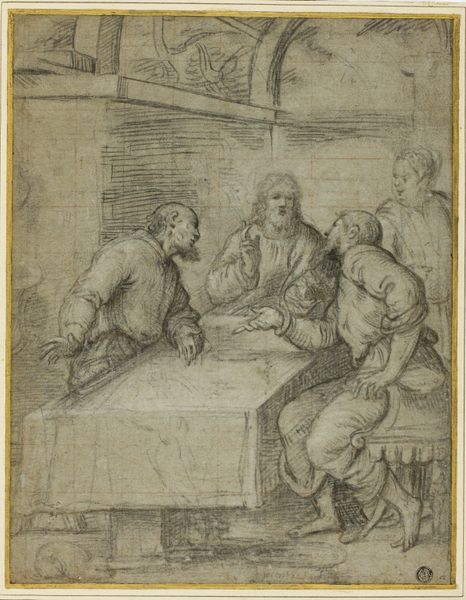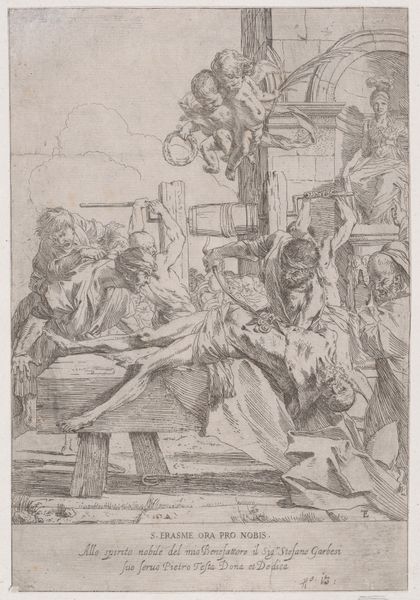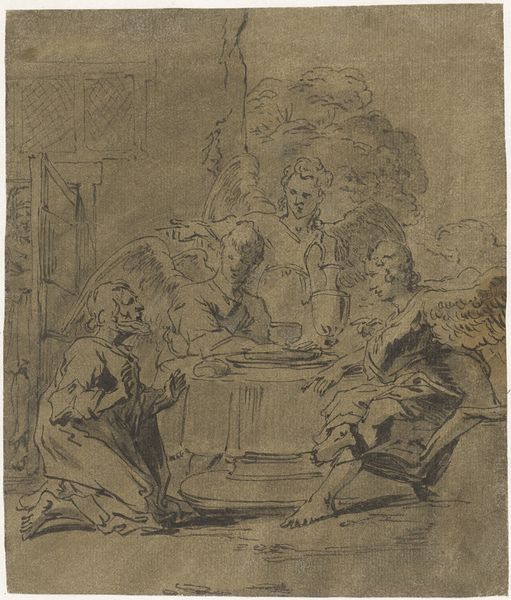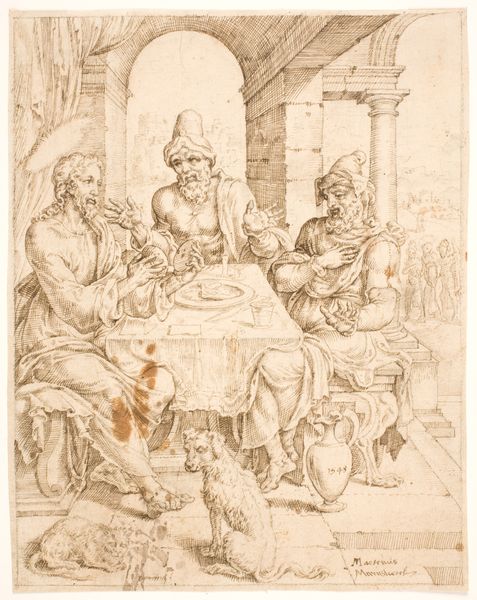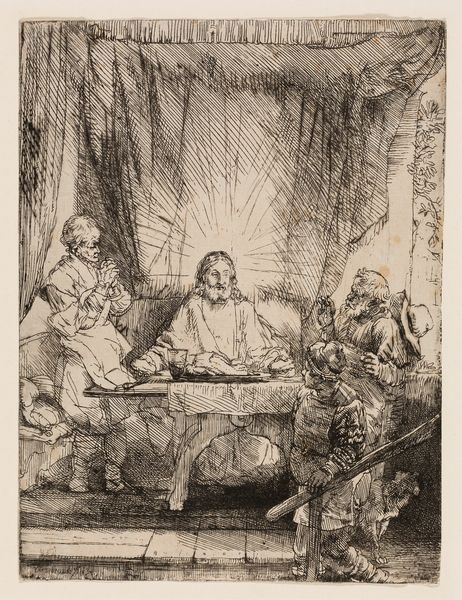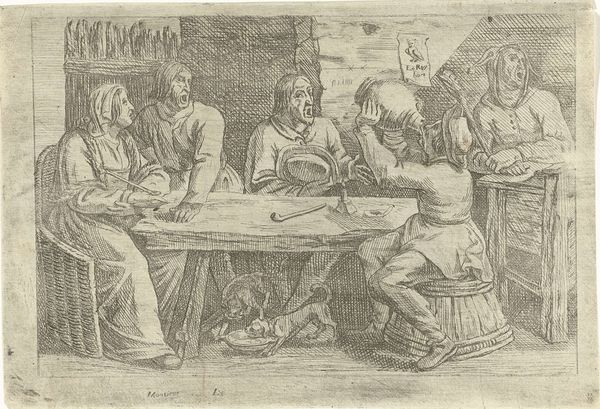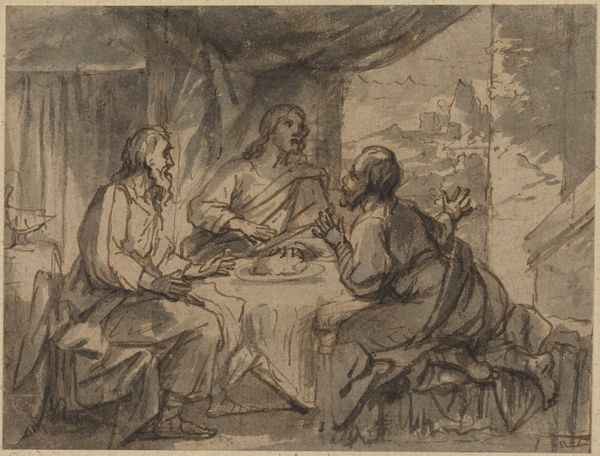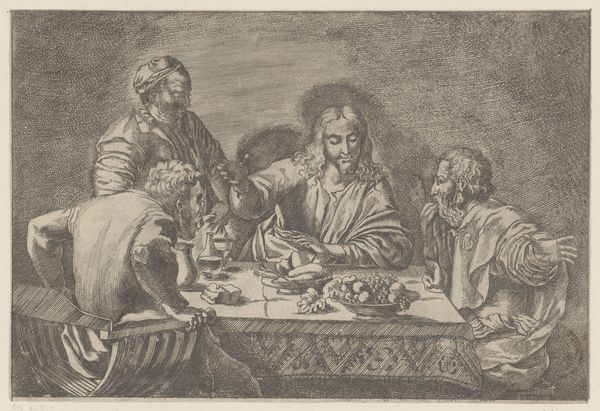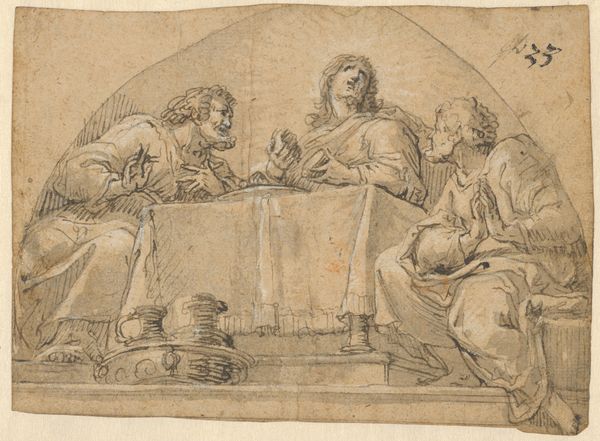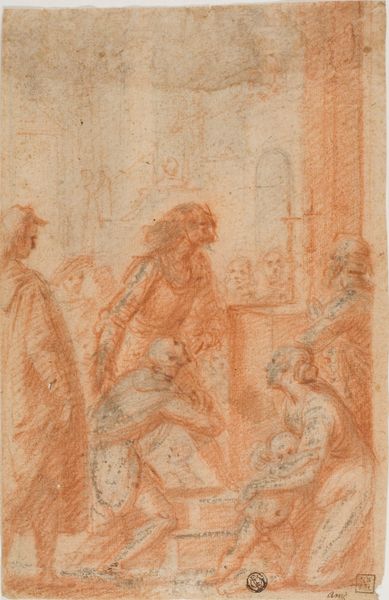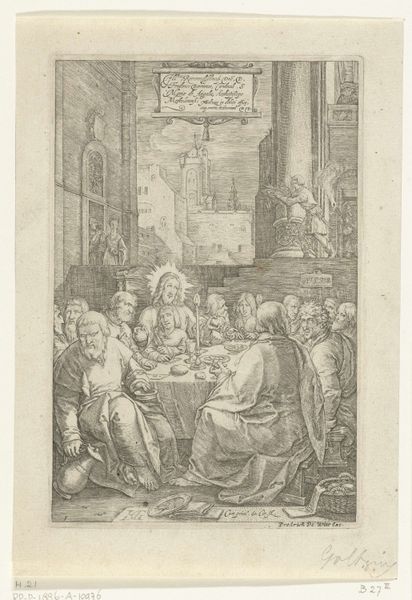
drawing, print, gouache, paper, ink, chalk, graphite
#
drawing
#
narrative-art
# print
#
gouache
#
figuration
#
paper
#
charcoal art
#
oil painting
#
ink
#
intimism
#
chalk
#
water
#
graphite
#
genre-painting
#
history-painting
Dimensions: 234 × 182 mm
Copyright: Public Domain
Curator: We’re looking at Pieter de Witte's "Supper at Emmaus," created between 1590 and 1595. It's a scene rendered in gouache, ink, graphite, chalk, and charcoal on paper. What's your immediate impression? Editor: Stark, yet inviting. The limited color palette and almost sketch-like quality give it a sense of immediacy, as if capturing a fleeting moment. I'm interested in the materials used to achieve this specific quality of light and shadow. Curator: Indeed. The image depicts the moment when the resurrected Christ reveals himself to two disciples during a meal in Emmaus. It is an archetypal narrative, immediately recognizable as a demonstration of faith's revelation through symbolic gesture. Look at how light emanates from Christ, a visual cue familiar in religious iconography to signify divine presence. Editor: It’s fascinating to consider how this image circulated, not as a singular oil painting intended for a wealthy patron, but as a drawing reproduced as a print. The layered process involved artists and artisans with different expertise, raising interesting questions about labor and access in artistic production at the time. The materiality and how the drawing could be consumed in multiples becomes a critical piece of context to the work’s dissemination. Curator: Precisely! And we can follow its long after life. The choice to depict this scene also speaks to broader cultural anxieties and desires related to faith and spiritual experience in the late 16th century. How the rediscovery or re-affirming of faith echoes and manifests, becoming an exemplar across varied contexts. Editor: I agree. The humbleness of its materials and broad distribution really brings to question how high and low art meet, even clash. Seeing the process helps us to understand it less as a divine piece, and more as a deeply material object meant for practical access and widespread consumption. Curator: A compelling way to consider how images operate in both sacred and secular spheres. Thank you. Editor: Likewise. Considering the artwork's production opened my eyes to different modes of circulation and consumption in its era.
Comments
No comments
Be the first to comment and join the conversation on the ultimate creative platform.
